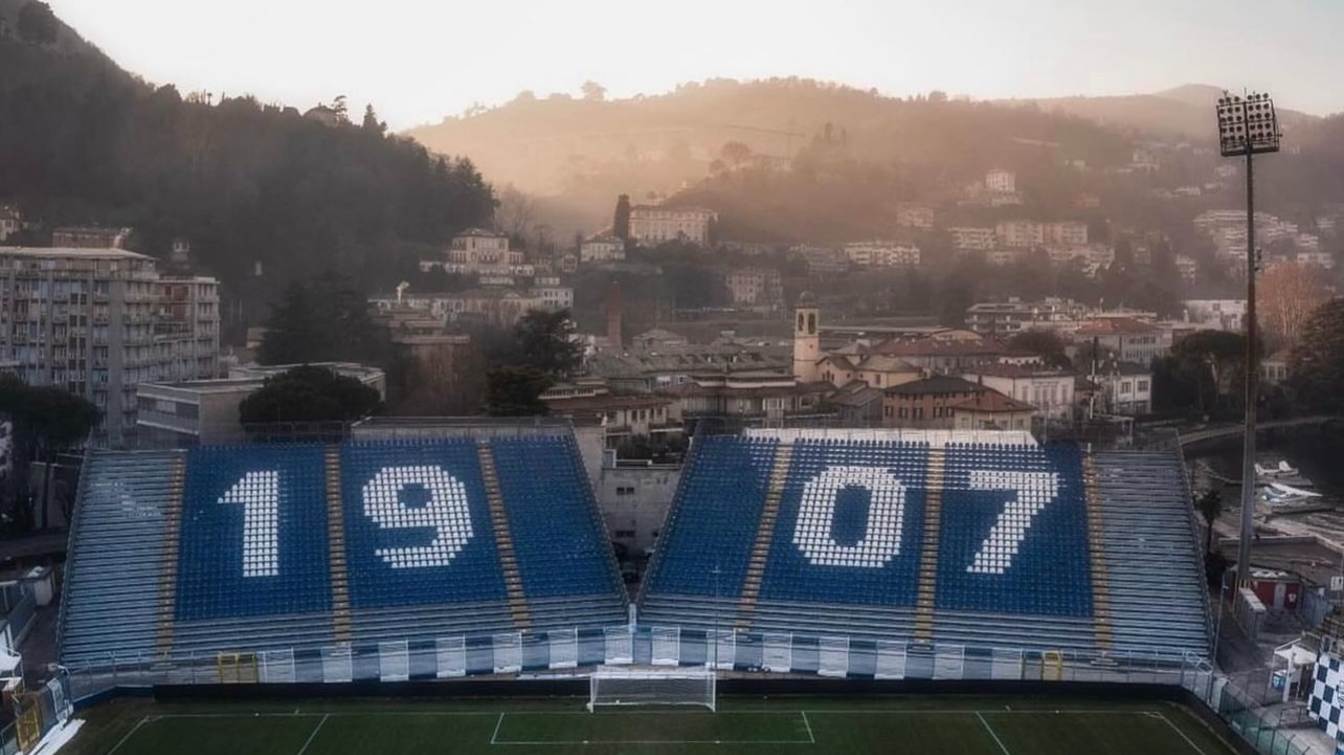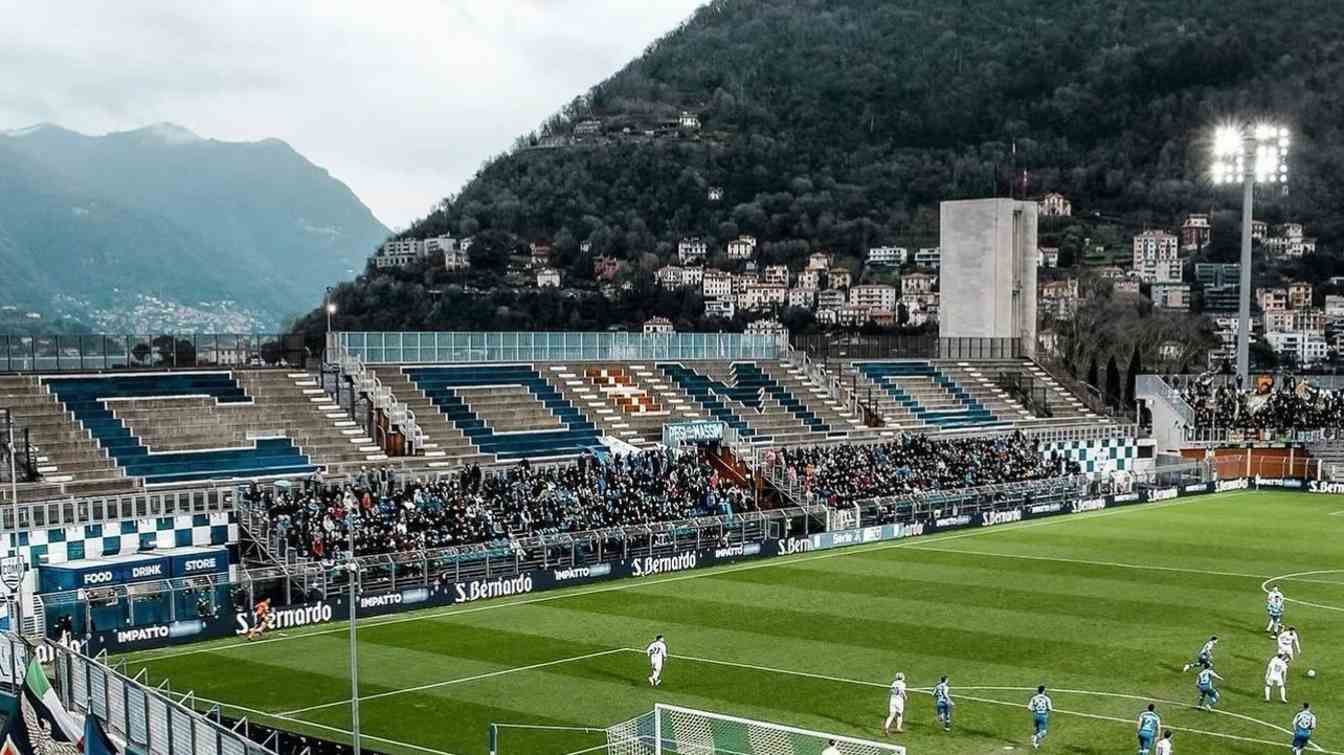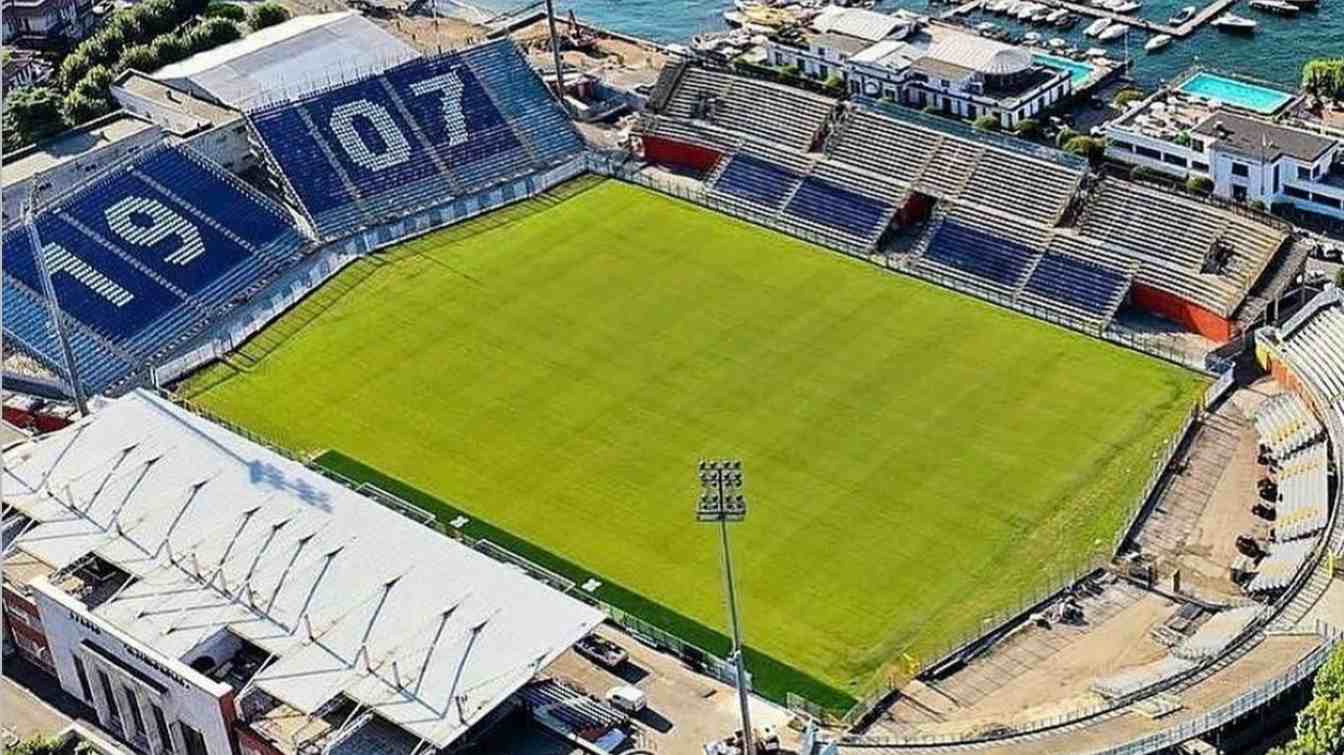Italy: Where will Como play after promotion to Serie A?
source: StadiumDB.com; author: Paulina Skóra
 Como is well on its way to securing direct promotion to Serie A. This success would mark a triumphant return to the club's illustrious past after a 22-year absence from the top flight. The club's authorities have been preparing for this eventuality for several months, with the first issue to address being the stadium.
Como is well on its way to securing direct promotion to Serie A. This success would mark a triumphant return to the club's illustrious past after a 22-year absence from the top flight. The club's authorities have been preparing for this eventuality for several months, with the first issue to address being the stadium.
Advertisement
Nearly a century-old facility falls short of requirements
Stadio Giuseppe Sinigaglia, opened in 1927, sits in the city center overlooking the lake Lario. Originally featuring an athletics track surrounded by a concrete cycling track, the stadium has undergone several renovations over the years. In 1990, a new main stand was constructed from scratch and in 2002, the concrete stands on the western curve were replaced with metal-based ones.
Unfortunately, this venue does not meet Serie A licensing requirements, thus cannot continue as Como's home ground. While its capacity was recently increased by 1,000 seats, immediate actions are still needed to bring it up to the highest standards.
Will wealthy owners assist?
Como's recent successes are credited to the Hartono brothers, Indonesian entrepreneurs Robert and Michael. Robert is the wealthiest individual in Italian football, with a fortune of $24.2 billion, ranking 61st on the global billionaires list. His brother Michael follows closely at 65th.
The brothers acquired Como in 2019, embarking on a long-term project to build Como's club identity. Former Chelsea player Dennis Wise serves as the club's president, while Thierry Henry and Cesc Fàbregas hold minority stakes, with the Spaniard being part of the coaching staff.
The Hartono brothers have declared their readiness to invest in the redevelopment of Stadio Giuseppe Sinigaglia, ensuring the club stays in the city. Our Como project takes Disney as a reference: theme parks, movies, studios, media, and merchandise all combined in one place. We need to do the same in Como. The owners will soon approve the project and present it to the Municipal Authority. This won't just be Como's stadium, open two or three days a month, but a city stadium, featuring commercial and medical spaces. What about promotion? Atalanta renovated theirs in stages. We can do the same,
said Mirwan Suwarso, the right-hand man of the Hartono brothers, in an interview with La Gazzetta dello Sport.
The implementation of the renovation project, set to be unveiled soon, will undoubtedly take several years. However, Como will need a stadium to play in just a few months if they are promoted. The club and city authorities are working on a plan to swiftly obtain the necessary permits for modifications to inaugurate Serie A matches in Como.
I fear Italian bureaucracy could slow down the project schedule,
explains Roberto Galli, president of Confartigianato province. But I hope this process will indeed kick off soon, at the right time. If we can help in any way, we are available.
Will they relocate from Italy?
Recent Italian media speculations suggest Como might relocate to... Switzerland, specifically to Lugano, about 30 kilometers away, at Stadio Cornaredo.
In my opinion, we could manage it within a year, barring any delays related to permits and bureaucracy. Of course, we'd have to level everything to the ground; we're not planning to spend three or four million on repairs. We're not here to throw money away. I believe we could adapt to Serie A in a short time. Our goal is to play at home. We haven't considered Lugano; our aim is to stay in Como,
said Mirwan Suwarso in an interview with La Provincia.
Stadio Cornaredo, inaugurated in 1951, currently hosts Swiss Super League team FC Lugano. It hosted one match during the 1954 World Cup. In 2015, following promotion to the Super League, the city of Lugano and the club carried out necessary work to meet the safety standards required by the Swiss Football League, resulting in a reduction of the stadium capacity from 10,500 to 6,330 seats.
Advertisement
 StadiumDB
StadiumDB ©
©  ©
©  ©
©